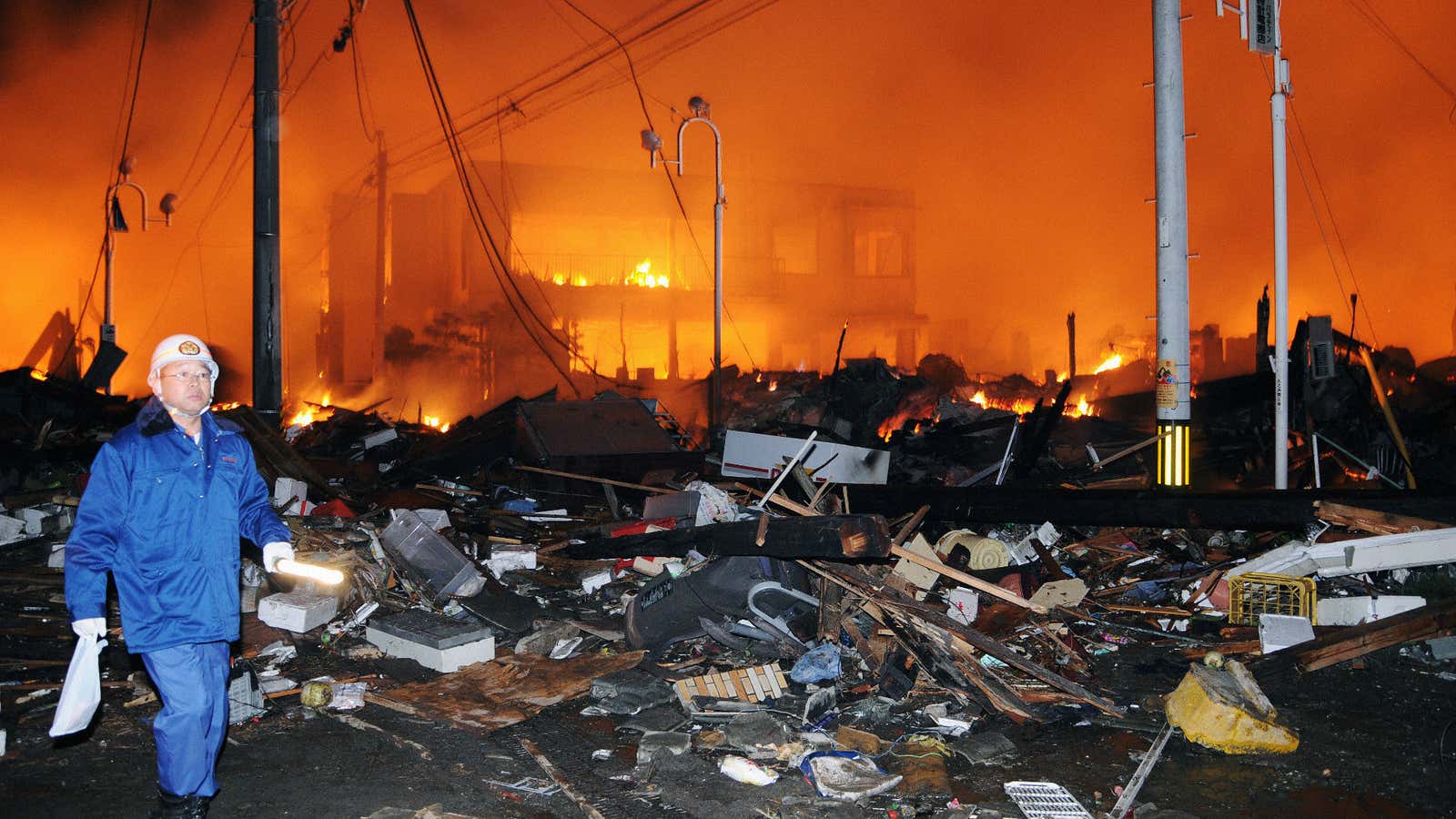As we report today, a group of scientists in Sydney has constructed the most advanced model so far of the Earth’s plate tectonics, creating a picture of what the continents looked like up to 1 billion years ago. These tectonic movements have shaped both the geography of the planet and its geology, and both of those have an outsized influence on the politics of the present day.
Consider March 11, 2011, and a spot 19 miles (31 km) under the Pacific and 43 miles east of Japan. At 5:16 pm local time, two tectonic plates—the North American and the Pacific—suddenly shifted by 50 meters (165 feet) and generated a chain reaction: a 9.0-magnitude earthquake, and a massive tsunami that swamped a nuclear reactor at the northern Japanese port of Fukushima.
The political effects were rapid. Germany and Japan halted their nuclear energy programs. Germany enacted Energiewende, its world-leading shift to renewables. Asian natural gas prices spiked. And solar panel prices, already plummeting, started to fall even faster.
If all that resulted from the Fukushima quake, imagine what the geopolitical consequences will be of the ”really big one,” the massive earthquake off the coast of the northwestern US that some seismologists say is overdue and could devastate 140,000 square miles of territory.
Geology is also pivotal to politics even without natural disasters. On Nov. 27, 2014, at the biannual meeting of OPEC in Vienna, Saudi Arabia insisted that the oil cartel carry out a price war in order to reinforce its command over the global market. This is in fact a war of geology: the geology underlying Saudi Arabia’s Eastern Province, which is what makes it OPEC’s richest and most influential member, versus the shale-rich geology underlying Texas and North Dakota, which has made the US—for the second time in its history—an upstart big oil producer. This battle of geologies has pushed the price of a barrel of oil into the $30s, from above $100 as of June 2014, inflicting fiscal misery and the threat of political instability on Russia and OPEC itself.
Russia’s Vladimir Putin would be at best a muted force in Ukraine, Europe and Syria were it not for his country’s remarkable geology. Indeed, the whole history of the Soviet Union would likely have been very different had it not had its abundant oil, gas, and mineral resources to power it through the Cold War.
Africa’s hopes of lifting itself out of poverty likewise lean on its geology—its oil and minerals. But as several African countries have already found, such wealth is often aptly called the “resource curse,” breeding corrupt regimes and generalized poverty.
On Dec. 12, 2015, in Paris, 196 countries mustered historic unanimity to begin to curtail the worst impacts of climate change, including drought, flooding and unbearable heat that could threaten coastal cities and cause mass migration, leading to major conflict. The rapid rise in atmospheric CO2 as a product of burning fossil fuels has, over time, overwhelmed the carbon recycling process that kept climate and temperatures more or less stable—and which is itself a feature of plate tectonics. Once again, therefore, the inner mechanics of the Earth are playing a pivotal role in human affairs—putting the geo in geopolitics.
